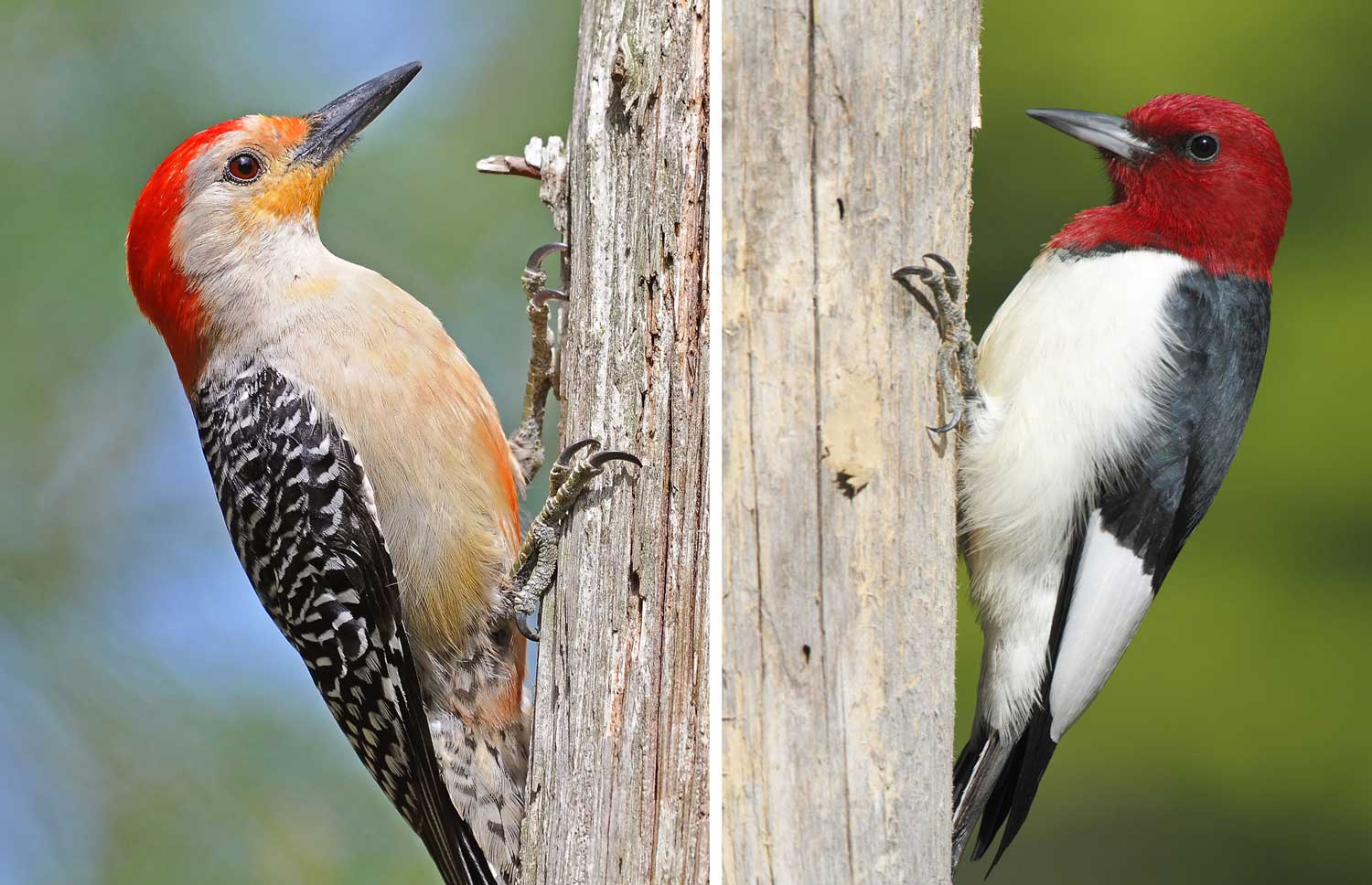What's the difference?: Red-bellied woodpecker vs. red-headed woodpecker

Unlike many cases of mistaken animal ID, red-headed woodpeckers and red-bellied woodpeckers don't actually look alike. The confusion between these two woodpeckers comes from their names, because the name red-headed woodpecker would be fitting for both birds.
Adding to the confusion: the so-called red bellies of red-bellied woodpeckers aren't that apparent. Because of this, red-bellied woodpeckers are often incorrectly referred to as red-headed woodpeckers.
While the red heads of these two birds is what causes confusion, they do have some differences. Red-headed woodpeckers have entirely red heads, and the shade is a deep, crimson red. Red-bellied woodpeckers, on the other hand, have red patches on the top and back of their heads, and it's a lighter shade of red, according to the National Wildlife Federation.
Beyond their red heads, both of these woodpeckers are otherwise black and white, but with very different and distinctive patterns. Red-headed woodpeckers have pure white bellies and black backs and wings that have large white patches, according to the Cornell Lab of Ornithology. Their stark appearance has led to such nicknames as flying checkerboard, jellycoat and flag board.
Red-bellied woodpeckers, on the other hand, have black and white stripes on their backs and wings, the Cornell Lab reports. Their bellies are a creamy white with pale reddish patches. The faint red patches on their bellies can sometimes be covered with white, making the namesake feature even less apparent.
Both red-headed and red-bellied woodpeckers live across the eastern United States, and they both prefer wooded habitats, according to the Cornell Lab. They also both typically excavate nesting cavities in dead trees or dead wood. Red-headed woodpeckers will sometimes use the same nesting cavity for many years, although that's not common among woodpeckers or birds in general.
Both of these woodpeckers eat a combination of plant and animal matter. Red-bellied woodpeckers eat a lot of insects, while red-headed woodpeckers eat mostly seeds, nuts and fruits and are less reliant on insects, the Cornell Lab reports. Red-bellied woodpeckers are more likely to visit bird feeders, especially in winter. They are particularly likely to visit feeders stocked with peanuts, suet and sunflower seeds. Red-headed woodpeckers are less frequent feeder visitors, but they do sometimes visit feeders stocked with suet in the winter.
These two woodpeckers aren't the only ones we see locally sporting red heads. Pileated woodpeckers have bright red crests, and male downy and hairy woodpeckers have a small red patch on the back of their heads. Northern flickers and yellow-bellied sapsuckers also have small red patches on their heads.
